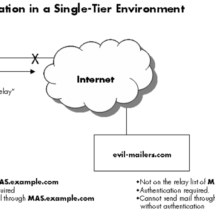In today’s fast-paced world, software development is a rapidly evolving field. The demand for new and innovative solutions is at an all-time high. As a developer, you need to stay ahead of the curve by adopting best practices that can help you deliver high-quality products on time and within budget. In this blog post, we’ll explore top 10 software development practices that can take your coding skills to the next level and help you achieve your goals.
1. Agile Methodology
Agile methodology has revolutionized software development by emphasizing collaboration, flexibility, and customer feedback. Some of the key benefits include:
- Rapid development: Agile teams work in small, time-boxed iterations called sprints, allowing for quick feedback and adjustments.
- High-quality products: Regular testing and continuous integration lead to fewer bugs and a smoother development process.
- Improved customer satisfaction: Agile promotes frequent communication with stakeholders, ensuring their needs are addressed throughout the development cycle.
2. Test-Driven Development (TDD)
TDD is a powerful technique that involves writing tests before writing the actual code. This approach has several advantages:
- Better code quality: Writing tests first ensures that your code meets the requirements and is less prone to errors.
- Easier debugging: With TDD, you can quickly identify and fix issues during the development process.
- Simplified refactoring: As your tests provide a safety net, you can refactor with confidence knowing that your changes won’t break the existing functionality.
3. Version Control Systems
Using a version control system (VCS) like Git, Mercurial, or SVN is crucial for efficient software development. Benefits of version control include:
- Easier collaboration: Multiple developers can work on the same project simultaneously without conflicts.
- Traceability: Track and manage changes to the codebase over time, making it simple to pinpoint issues or revert to a previous state.
- Backup and security: A VCS provides a reliable backup of your code, preventing data loss in case of hardware failure or accidental deletion.
4. Continuous Integration and Continuous Deployment (CI/CD)
CI/CD is a set of practices that promote fast and reliable software releases. Key aspects include:
- Automated testing: Run tests automatically with each code change, ensuring that bugs are detected and fixed early in the development process.
- Frequent releases: Deploy smaller, incremental updates to your application, making it easier to manage and troubleshoot.
- Reduced risk: Since you’re deploying smaller changes more frequently, there’s less risk of introducing critical issues with each release.
5. Code Reviews
Code reviews are an essential part of the software development process. They provide the following benefits:
- Improved code quality: Code reviews help identify and fix bugs, performance issues, and maintainability concerns.
- Knowledge sharing: Developers learn from each other’s expertise and experience, improving their coding skills.
- Increased team cohesion: Reviewing code together fosters a collaborative and supportive team environment.
6. Proper Documentation
Good documentation is vital for both your team and your users. Keep these tips in mind:
- Write clear and concise code comments: Ensure that your code is easy to understand for other developers, making it simpler to maintain and troubleshoot.
- Create user-friendly documentation: Help users get the most out of your software with comprehensive guides, FAQs, and tutorials.
7. Refactoring
Regularly refactoring your codebase is key to maintaining its overall health. Benefits of refactoring include:
- Increased maintainability: Clean, well-organized code is easier to understand and modify.
- **Improved performance**: Optimized code runs faster and consumes fewer resources, leading to a better user experience.
- Reduced technical debt: Addressing code issues early on prevents them from snowballing into larger problems down the line.
8. Adherence to Coding Standards
Following established coding standards ensures that your codebase remains clean, consistent, and maintainable. Key points to consider:
- Use a consistent naming convention: Consistency in naming variables, functions, and classes makes it easier to read and understand your code.
- Follow language-specific best practices: Familiarize yourself with the recommended practices for your programming language to produce clean, efficient code.
- Leverage linters and code formatters: Tools like Prettier, ESLint, and Black can help enforce coding standards and automatically fix issues.
9. Effective Time Management
Developing good time management habits can significantly improve your productivity. Here are some tips:
- Break tasks into smaller, manageable chunks: Tackle complex tasks by breaking them down into smaller steps, making it easier to stay focused and maintain momentum.
- Use a task management system: Tools like Trello, Asana, or Jira can help you prioritize tasks and track progress.
- Set realistic deadlines: Be mindful of your capabilities and avoid overcommitting to ensure that you deliver quality work on time.
10. Continuous Learning
To stay competitive in the ever-changing world of software development, it’s essential to keep learning and growing. Consider these approaches:
- Stay up-to-date with industry news: Follow blogs, podcasts, and social media to keep informed about the latest trends and innovations.
- Attend conferences and workshops: Network with other professionals and expand your knowledge by attending industry events.
- Invest in online courses and certifications: Develop new skills and deepen your expertise by pursuing relevant courses and certifications.
In conclusion, adopting these top 10 software development practices can greatly enhance your coding skills, boost your productivity, and ultimately lead to the creation of high-quality, reliable software. By staying agile, writing tests, using version control, implementing CI/CD, conducting code reviews, documenting properly, refactoring, adhering to coding standards, managing time effectively, and continuously learning, you’ll set yourself up for success in the competitive world of software development.


















